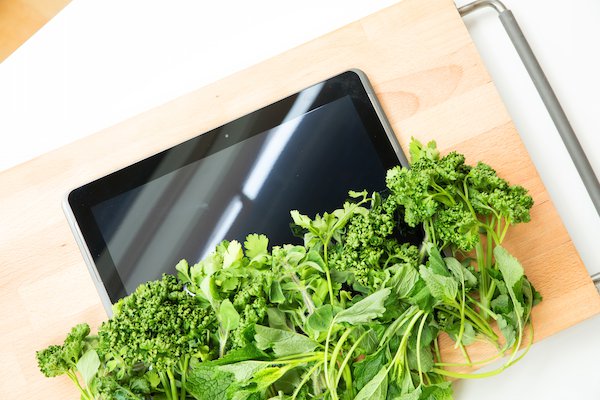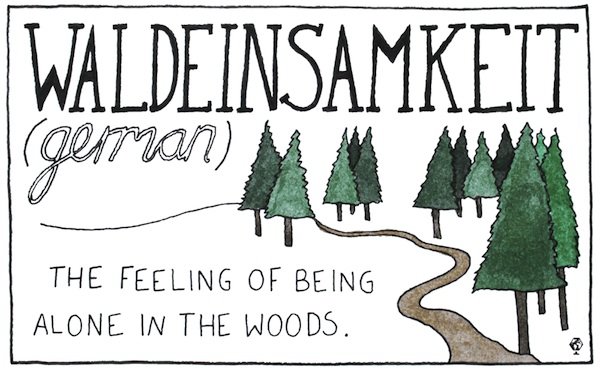

My family emigrated from Russia to the United States when I was 13 years old. Refugee camps, city housing projects, food stamps, wearing donated clothes, being made fun of endlessly for everything from not speaking English to eating weird things for lunch (hot dogs apparently need to be consumed inside hot dog buns, not sliced and slipped between pieces of dark brown bread): that’s the patchwork of memories composing my early life here.
While we were almost entirely dependent on the kindness of strangers during that time, the stress and trauma we felt obliterated any notion of gratitude; when you’re just trying to survive, thankfulness seems like a luxury, not a coping strategy. For me, surviving the pain of that experience was all about coping, and my coping strategy was laser-focused on one goal: becoming happy. Really happy. It was an immigrant’s dream -- The American Dream: Achieve a lot of things, be successful, make a lot of money, move on and move up.
This sounds naïve, but I hear adults with a lot more maturity and life experience than I had as a teenager talk about happiness the same way as I thought about it back then. Being happy was conditional. Situational. It would come after success, achievement, money, status, a certain home, a certain job. Research shows we’ve reversed the order of things completely – small things and moments generate more satisfaction and happiness than large ones – but I didn’t know that then. This is why I’m grateful that I only wasted 15 years chasing my “big happy” and not more.
One of the many things I learned while chasing The Big Happy was that even though a lot of satisfaction and pride comes with achievement, happiness does not. In fact, the chase of this idealized non-existent state of happiness left me depressed and exhausted.
Luckily, it also left me hungry to find answers and inspired me to turn to science to see if I could find another way to happiness. The answer I found in every article and book and research paper I read was this: practice gratitude.
Confession: Practicing gratitude as a way to find inner peace, contentment, and lasting happiness seemed ridiculous to me. It was too simplistic, too cliche. I wanted to dismiss it, but I couldn’t. I needed help. So I decided to follow the research and see where it led me; for a few months, I would practice gratitude intentionally and regularly. I was sure it wouldn’t work and certain that my experiment would allow me to feel justified in dismissing it as the solution it was purported to be.
My first step was to write down three good things about my day. I did it every day, even on days when this was a struggle. In one study participants who were asked to do this for 21 days reported feeling more optimistic, less anxious, and even slept better — immediately after and three and six months after the study. Another study showed that participants who kept a gratitude journal for 10 weeks reported having fewer health problems and spent more time exercising.
My second step was making a rule to say thank you at least once a day. I wasn’t a rude person, just always in a hurry, and now I would make a point of actually pausing to say thanks. Expressing gratitude to others has been shown to do everything from improving romantic relationships to increasing happiness and depressive symptoms. One of the most powerful ways to do this is by writing a gratitude letter to someone, but I found a simple text message to a friend has similar benefits if you mean it.
New research has shown that positive interactions with strangers leads to feeling more cheerful and increasing your sense of belonging. So saying thank you to a barista who makes your coffee can lead to feeling happier just like saying thank you to friend does.
My third gratitude habit was to pause and savor something once a day. It sounds silly to have to learn to do this, but I realized the stress of my early life had made pausing and savoring moments seem like another luxury I couldn’t afford. Ever since I could remember, I’d rushed through every experience in my life instead of being there. But I made a deal with myself to try to be more present, so I tried. I stopped eating while standing up. I would literally stop to smell the flowers I’d bought for our kitchen. In one study students were instructed to savor two pleasurable experiences per day and reflect on each for a few minutes. They showed significant increases in happiness and reduction in negative feelings.
There are three steps to savoring: Anticipate the experience, be present during it — no checking email while drinking your coffee — and then reflect on it for a few minute to extend its positive effect. Anticipation is key; studies have shown that planning a vacation makes you feel happier than actually taking it.
Here’s the punch line: Despite my extreme skepticism, practicing gratitude changed my life.
It didn’t turn me into some happy-go-lucky person I was never meant to be (or, frankly, wanted to be). But I developed a fundamentally different way of thinking and moving through life, one in which I stopped taking for granted all the tiny good moments that were already part of it. I stopped looking for happiness out there and learned to find it right here. I felt more connected to friends, family, and my colleagues, and even on the toughest days, I managed my stress better (which research shows is a long-lasting effect of practicing gratitude).
My advice? Give gratitude a shot.
If you’re skeptical, do it anyway. If your reaction as you’re reading this is, “This is so not for me,” do it as an experiment. Gratitude is a skill and a habit you can cultivate, and just because it doesn’t come naturally, doesn’t mean there is anything wrong with you or you won’t be able to feel the benefits that come with nurturing your gratitude habit.
Don't miss your happier boost!
Subscribe to our weekly email to get practical tips and inspiration to help you feel more joyful and resilient.


